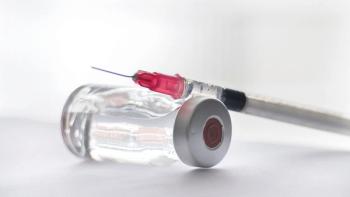
- BioPharm International-08-01-2013
- Volume 26
- Issue 8
Filling a Drug Safety Gap
As the Supreme Court ruled on generic-drug liability, FDA outlined new rules for warning labels.
In June, the US Supreme Court issued major legal decisions that may change the way pharmaceutical and biopharmaceutical companies conduct business and address drug safety.
Rita Peters
In Federal Trade Commission v. Actavis, Inc., et al., the Court ruled that financial deals between innovator drug companies and generic manufacturers to delay generic substitutes from getting to market can be legally challenged, but such payments are not presumptively illegal. In Association For Molecular Pathology, et al. v. Myriad Genetics, Inc., et al., the justices ruled that naturally occurring human genes and gene fragments are not patent-eligible. An analysis of the decision and its implications begins "New Gene Patent Rules".
In Mutual Pharmaceutical Co., Inc. v. Bartlett, a patient who was prescribed sulindac, a generic nonsteroidal anti-inflammatory (NSAID) pain medicine, developed toxic epidermal necrolysis, which resulted in serious, permanent injuries. In 2009, the patient sued Mutual Pharmaceutical, the generic-drug's manufacturer in New Hampshire, arguing under the state's product liability laws that the drug label did not specifically warn that the drug could cause toxic epidermal necrolysis, and the drug was defective and unreasonably dangerous. (FDA later recommended that all approved NSAIDs warn against toxic epidermal necrolysis.) A trial court awarded the plaintiff $21 million in damages; the award was upheld under appeal.
In a 2011 decision, PLIVA Inc. v. Mensing, the Supreme Court had ruled that generic-drug manufacturers are not liable under state failure-to-warn laws because the US Food, Drug, and Cosmetic Act (FDCA) requires generic drug manufacturers to copy the packaging inserts of innovator drug manufacturers. Thus, federal law prevents generic drug manufacturers from changing warning labels.
In the Mutual Pharmaceutical decision, the Supreme Court, in a 5–4 split vote, extended the Pliva decision to the design-defect argument, concluding that FDCA requires a generic drug to have the same active ingredients, dosage form, and strength as an innovator drug. The Court rejected the Bartlett's argument that a generic manufacturer can comply with federal and state laws—and avoid liability—by not manufacturing the drug. In effect, a brand-name drug manufacturer can be sued over a drug's warning label, but the manufacturer of a chemically identical generic drug cannot be sued.
FDA is proposing rule changes that the agency says would "create parity" between innovator and generic-drug manufacturers "with respect to submission of CBE (changes being effected) labeling supplements." Generic-drug manufacturers could update their drug warning labels if the company discovers risks to patients, without waiting for the brand-drug manufacturer to make a change.
The proposed rule, Supplemental Applications Proposing Labeling Changes for Approved Drugs and Biological Products, would amend the regulations for new drug applications, abbreviated new drug applications, and biologics license applications "to revise and clarify procedures for changes to the labeling of an approved drug to reflect certain types of newly acquired information in advance of FDA's review of such change." The rule would allow generic-drug makers to make changes in their labeling, but also could expose the companies to potential liability.
While the timing of the proposed rule is interesting, given the recent court decision, the changes have been discussed for some time. In 2011, Public Citizen, a consumer organization, petitioned FDA to revise generic-drug labeling practices. The Generic Pharmaceutical Association has stated that the warning labels should be the responsibility of FDA, not individual companies. FDA plans to issue the rule, which will be open for public comment, by September. The discussion should be interesting.
Rita Peters is the editorial director of BioPharm International.
Articles in this issue
over 12 years ago
Navigating Emerging Markets: South Koreaover 12 years ago
New Gene Patent Rulesover 12 years ago
Process Lifecycle Validation: Applying Risk Managementover 12 years ago
Bioprocessing Advances in Vaccine Manufactureover 12 years ago
Applying Continuous-Flow Pasteurization and Sterilization Processesover 12 years ago
Seeking Harmonization in Nanomedicines Regulatory Frameworkover 12 years ago
Pharma Invests in Gene Therapy Programsover 12 years ago
Making Connections: The Crucial Junctions in Single-use Systemsover 12 years ago
India Braces for New Drug Pricing Policyover 12 years ago
Generic Drugs Face Regulatory and Scientific ChallengesNewsletter
Stay at the forefront of biopharmaceutical innovation—subscribe to BioPharm International for expert insights on drug development, manufacturing, compliance, and more.


